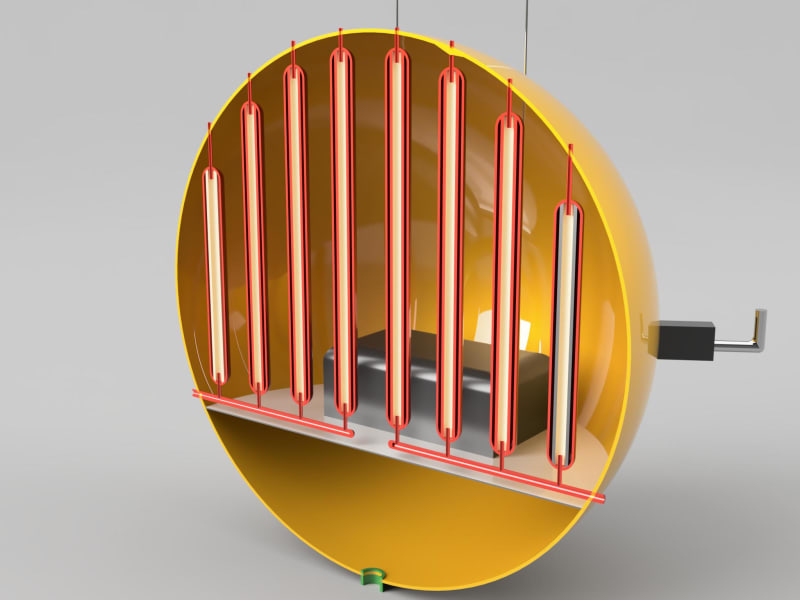The buoyancy-assisted desalination system uses a hollow sphere which can be easily deployed by a ship. The sphere houses the reverse osmosis system required to turn seawater into potable water. The sphere is positively buoyant. The sphere has a large enough empty cavity that, even with the internal filters and collector tank full, the sphere will maintain its positive buoyancy. Several motor-operated hinges are connected to the outer shell. Additional weight in the form of anchors or sandbags can be connected to these hinges. With additional weights, the buoyancy becomes negative which causes the sphere to sink. The sphere is submerged to around 500m underwater. The hydrostatic pressure at such depths is close to 50 bar which is sufficient for pushing the seawater through the RO filtering mediums. Moreover, water at those depths is significantly free from contamination when compared to shallow water. This negates the need for a pre-filtration system. An onboard sensor detects the depth and onboard collector tank level. It releases some of the additional weight in order to maintain the set depth. When the tank is completely full, the onboard computer releases all the additional weights attached to the motor-operated hinges. The sphere achieves positive buoyancy once again. The sphere will make a controlled ascent to the surface. The tank filled with potable water can be pumped out of the sphere. A loose tether with fiber optic cable connects the sphere with the ship. This is to ensure that the sphere stays within the proximity of the ship. An emergency ascent can be performed upon detection of an underwater current.
Like this entry?
-
About the Entrant
- Name:Vignesh Kanna R
- Type of entry:teamTeam members:
- SUSHIL SAMUEL DINESH
- Patent status:none

